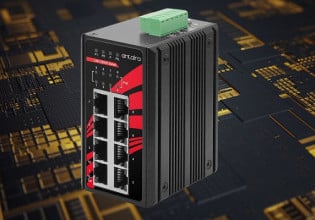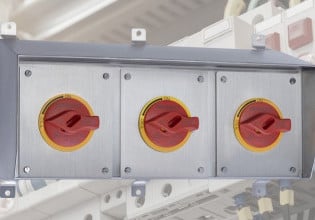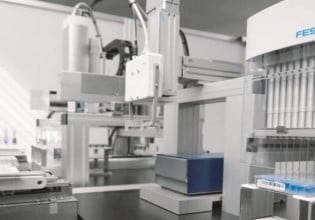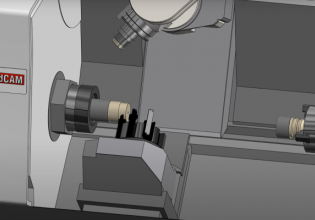Radiation Sensors: Detecting Particle and Wave Emissions
Radiation, despite its reputation in pop culture as a harmful emission resulting from a natural disaster, is a property of many materials and processes and must be carefully monitored for quality and safety.
See Our Previous Articles on Industrial Sensors:
- Flow Rate Sensors for Fluid System Measurement
- Microelectromechanical System (MEMS) Sensors
- Position and Distance Sensors for Accurate Tracking
- Torque Sensors for Measuring the Force of Rotation
- Vibration Sensors For Use In Condition Monitoring
Radiation is a natural phenomenon where a source material emits energy in the form of waves or particles. Source materials can be the sun, radioactive materials, and medical treatments. Radiation has been present since the beginning of time.
In popular culture, radiation is known as harmful energy that can be used to cause destruction. While that is contextually true, radiation also has many beneficial applications. Radiation is harmful to humans because, in prolonged high doses, it can damage tissues, change cell structures, and damage DNA. For this reason, it is vital to count on radiation sensors, particularly in beneficial applications where human contact is expected.

Figure 1. Particles and photons are emitted from the nucleus of an atom in nuclear radiation. Image used courtesy of Adobe Stock
Radiation sensors are designed to detect and measure radiation levels in a given moment, providing important data for safety and other purposes. This chapter will discuss the most important radiation sensors available and some industrial applications.
Scintillation Detector
Scintillation detectors are radiation sensors that use materials that emit light when struck by radiation. Sodium iodine and some organic-based liquids are commonly used scintillating materials. Scintillation occurs when an incoming particle or photon interacts with the material, producing a burst of light. This light is typically very low intensity, making it necessary to use special photomultiplier devices. In addition, photomultipliers convert the light into an electrical signal.

Figure 2. A Positron Emission Tomography (PET) scanner. Image used courtesy of Adobe Stock
Scintillation detectors are ubiquitous in medical imaging devices, especially PET scanners, which use radioactive tracers to image internal organs and tissues. These detectors are also useful in environmental monitoring.
Ionization Detector
Ionization detectors are another type of radiation sensor that works by measuring the ionization produced by radiation passing through a gas-filled chamber. Ionizing radiation is a particular type of radiation that produces so much energy that it can remove electrons from atoms, causing them to become ionized.
There are three main types of ionizing radiation: alpha particles, beta particles, and gamma rays. This level of radiation poses a higher risk to living organisms, and therefore, it is strictly regulated for industrial use. Therefore, guidelines and protocols must be followed when operating with ionizing radiation. Also, it is very important to monitor levels of ionizing radiation using the proper sensors.
The following are the most common types of ionizing radiation sensors.
Ionization Chamber
These sensors consist of a gas-filled chamber with two electrodes. One of the electrodes is a positively charged anode, and the other is a negatively charged cathode. The gas in the chamber is ionized when radiation passes through it, producing a small electrical current, which is used to calculate the amount of radiation present.

Figure 3. A medical dosimetry ion chamber. Image used courtesy of Rotunda Scientific
Ionization chambers are useful tools in medical dosimetry, a field of medicine that manages radiation therapy for cancer patients. They are also used as monitoring tools in nuclear power plants.
Proportional Chamber
These sensors are based on the same working principle as ionization chambers but are also designed to amplify the signal produced. They apply a high voltage across the gas-filled chamber. As a result, the ionized electrons are amplified to produce a more detectable signal.
Proportional chambers are not common in industrial settings. However, they are useful for conducting particle physics experiments and nuclear physics research.
Geiger Counter / Geiger-Muller Counter
These sensors are designed to detect small amounts of radiation. In this case, a gas-filled chamber has an additional central wire electrode and a surrounding cylindrical electrode. When radiation enters the chamber, the ionized gas emits electrons toward the electrodes, which amplifies the signal. The measurement process produces that clicking sound popularized in many movies.

Figure 4. A Geiger-Muller counter. Image used courtesy of Adobe Stock
Geiger-Muller counters are primarily used for environmental radiation monitoring and surveying.
Semiconductor Detector
These sensors use a semiconductor material to detect radiation. One of the most common semiconductors used is silicon. As radiation passes through the semiconductor, it produces electron-hole pairs, which are detected and amplified by a detector.
Electron holes occur in semiconductors when electrons go missing from atoms due to radiation. The lack of electrons creates an imbalance that results in a positive electrical charge.
Semiconductor detectors are often used in X-ray spectroscopy.
Radiation Sensor Applications
Radiation sensors play important roles in nuclear power plants, medical facilities, and for environmental monitoring. Environmental health and safety are at relatively high risk in all of these cases, so these sensors must be present and working properly.
Radiation sensors are also present in the manufacturing industry, where they help control the quality of semiconductors. They are even important tools for Homeland Security to detect and identify sources of radiation that could be used for malicious purposes. This is why these sensors can be found at airports and border crossings.






